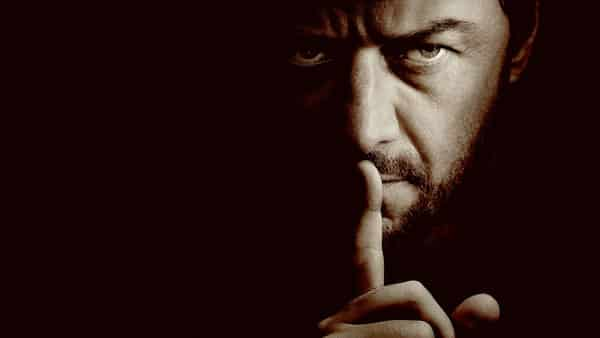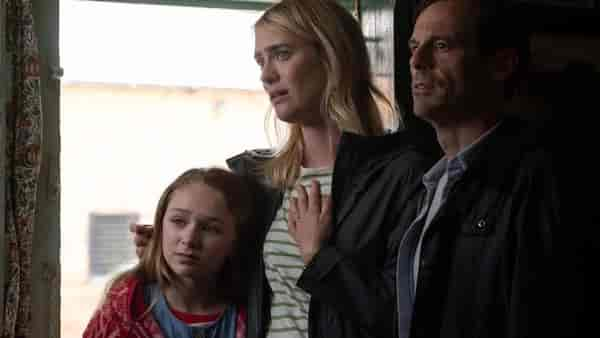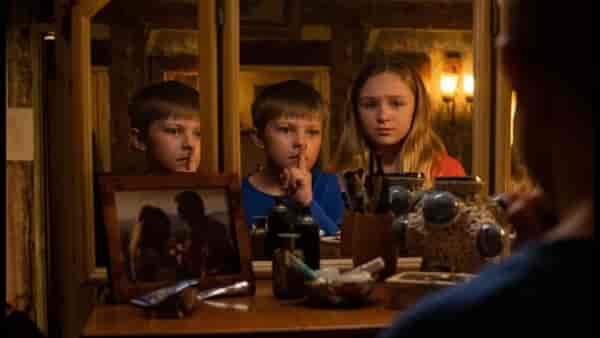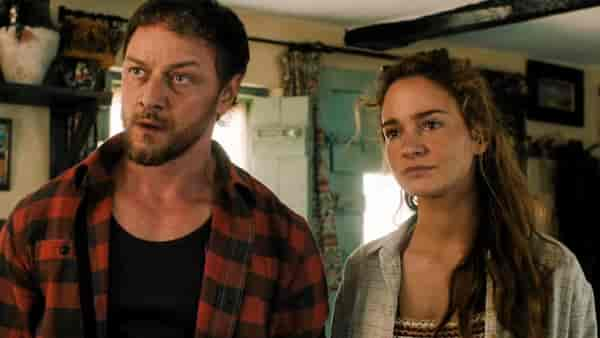Speak No Evil Is A Rare Horror Remake That Outclasses Its Source Material
Speak No Evil has the atmospherics and plotty tension of a Shyamalan movie, the teasing aesthetic of Luca Guadagnino’s A Bigger Splash, and the satirical class commentary of a Ruben Ostlund film.

Promo poster for Speak No Evil
Last Updated: 09.02 PM, Sep 15, 2024
AN UPTIGHT AMERICAN FAMILY, on vacation in Italy, meets a free-spirited British family. The American couple, Ben (Scoot McNairy) and Louise (Mackenzie Davis), are disarmed. Suddenly, their difficult move to London feels worthwhile. The British couple, Paddy (James McAvoy) and Ciara (Aisling Franciosi), are funny and welcoming. Even the two children seem to get along; 11-year-old Agnes (Alix West Lefler) is empathetic towards Ant (Dan Hough), who has a crippling anxiety and speech defect. Ben, Louise and their daughter soon find themselves spending a weekend at the remote country home of their new friends. What starts as a quaint break, though, becomes a holiday from hell. Naturally, the invitation was too good to be true.
Speak No Evil has the atmospherics and plotty tension of a Shyamalan movie, the teasing aesthetic of Luca Guadagnino’s A Bigger Splash, and the satirical class commentary of a Ruben Ostlund film. This sounds like a dream combination – and at times, it probably is. So much of a psychological horror film depends on how the audience engages with its characters. You look for clues, for gestures, for social hints, for silent histories, and for signs of trouble. For instance, early on, a throwaway moment shows Ben noticing Paddy – a complete stranger – ordering a beer and living it up by the pool. Ben wonders if he should get a beer too, but he sees his wife’s reaction and decides against it. This implies that their marriage is shaky. As does a scene where – at the country home later in the film – Ben sighs when Louise invites their anxious daughter to sleep with them on the same bed. So much is suggested with so little. A crisis is brewing at home, and nothing like a scary weekend with a weird family to fix that.

For fans of the original Danish film of the same name, Speak No Evil poses some interesting challenges. Narratively, the ending is different. More Hollywood-ish, if you may. The Danish film is wry and brutal in its indictment of both sides. It condemns the urban dysfunctional family in an eat-the-rich manner, and the creepy country couple through the lens of class rage. But this one picks a side without dismissing the other. At some points, the uppity Americans look destined to die: Louise is a vegetarian (if she were vegan, this would have been a slasher flick), Ben is a frustrated corporate slave, and Agnes is yet to outgrow her attachment to soft toys. They’d stand no chance at a White Lotus resort. They don’t do themselves any favours, especially when they get appalled by the ‘rustic’ elements of the house. It was supposed to be an exotic getaway – the kind that wealthy and tone-deaf families pay for when they want to reconnect with nature. At some points, you’re almost rooting for Paddy’s mercurial behaviour, because you know he’s getting a kick out of circling the prey.
The alternative ending works because it’s more complicated than the “crowd-pleasing” one it looks like. This is also another way of saying that the remake is better than – and updates – the original. I like that this film makes us judge the unsuspecting family but still reminds us that they’re human. They are flawed but never unlikable. There’s always a sense that if they survive this weekend, divorce might still be imminent. This won’t cure them, no matter how dark it gets and how much they’re forced to band together. The film-making toys with our moral and cultural preconceptions, ratcheting up the intrigue in a way that the violence eventually feels like a relief. It’s not about if Paddy and Ciara are psychopaths; it’s about when they decide to reveal it. And the movie does have some fun with the when, particularly because it expects most horror nerds to come in with pre-ordained disdain for the hamburger-isation of a Danish pastry. This is also a rare spookfest where there are no jumpscares. It’s all in the head; in the anticipation of carnage during a weekend that escalates as much as it de-escalates.

Another reason Speak No Evil works is because of the dream (or nightmare, whichever way you put it) cast. Many of the exchanges are laced with the simmering energy of a bomb waiting to explode; even the lively ones come with a caveat. McNairy and Davis do a good job of being annoying American tourists whose redemption is rooted in parenthood. They play the couple like they deserve to be butchered in most cabin-in-the-middle-of-nowhere stories. The child actors, too, bring enough desperation and humanity to their roles to contextualise our distaste for the adults. Franciosi, as Ciara, delivers a mysterious performance that almost feels poignant in retrospect. That’s what perceptive actors do; they sprinkle tiny clues of truth across their fiction, playing people who exist in both the past and the present.
It’s no surprise, however, that the film belongs to James McAvoy. The Scottish actor is terrifying and charismatic at once. When he’s friendly with the couple, it’s like he is unfolding as a fantasy of rugged masculinity to Ben and Louise: one wants to be him and the other subconsciously wants him. Even the viewer yearns for his validation in a strange way – “Don’t piss him off, please humour him,” I kept thinking. There’s more than an echo of his dissociative-identity-disorder villain The Horde (from Shyamalan’s Unbreakable trilogy) in how Paddy is so feral with his emotions and body language. It’s unnerving to see how the character struggles to play the role of a normal fun-loving guy. Not a facial muscle goes unused; his eyes keep darting around, as if the man is straining hard to keep the monster within him a temporary secret.

A lot of the film’s changes depend on McAvoy, and he fills every scene with an addictive dread of its own. You nearly want to believe in his twisted motives, not least because he appeals to the disillusioned middle-class survivors within us. It’s a turn that’s unhinged from the get-go; it’s just that we choose to recognize the madness when it’s convenient for us. Like Ben and Louise, we see what suits us best – until we can’t see anymore. That’s the point of the title: Evil is no longer a distant language. For some, it’s a deranged rural family with ulterior motives. For others, it’s a privileged city family who reduces other lives to personal escapes and experiences.

 Premium
Premium